These masculine home workspaces blend into the home and still maintain their visual separation from the rest of the space. Let’s see how three ideas come to life in different ways to create masculine nuances into spaces that also host a home workspace: Dark, Geometric, Bold.
We’ve chosen to explore three types of ways you can express masculinity in a space that blends together living and working.
- Using deep, rich colors and textures
- Using geometry to shape patterns and visual interest
- Using bold colors in mostly subdued color palette
As we move from example to example, keep in mind your own needs and explore the “what ifs” of each home workspace – deep delicious colors, rough textures, imposing mood.
- Using deep, rich colors and textures:
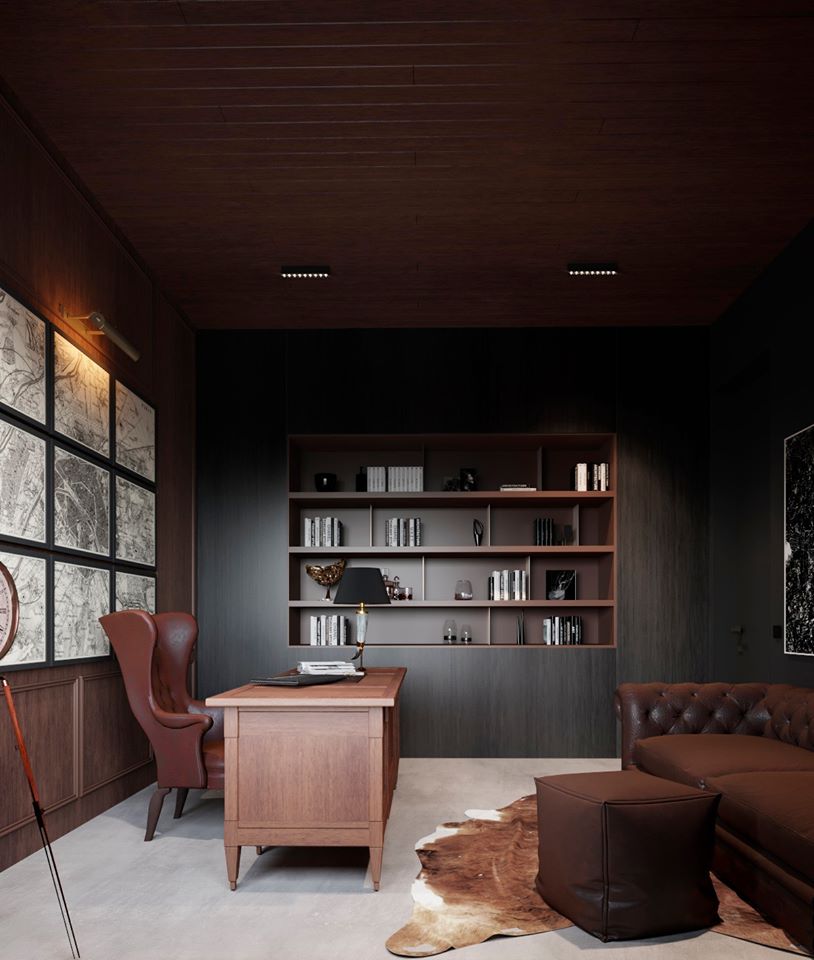
Dark wood seems to give off a cave-like feeling whenever used in most of the office room, like in the example above. Dressing all walls and ceiling in dark wood and keeping the floor light-colored makes the space look imposing, especially with a map decorating the wall behind the big armchair.
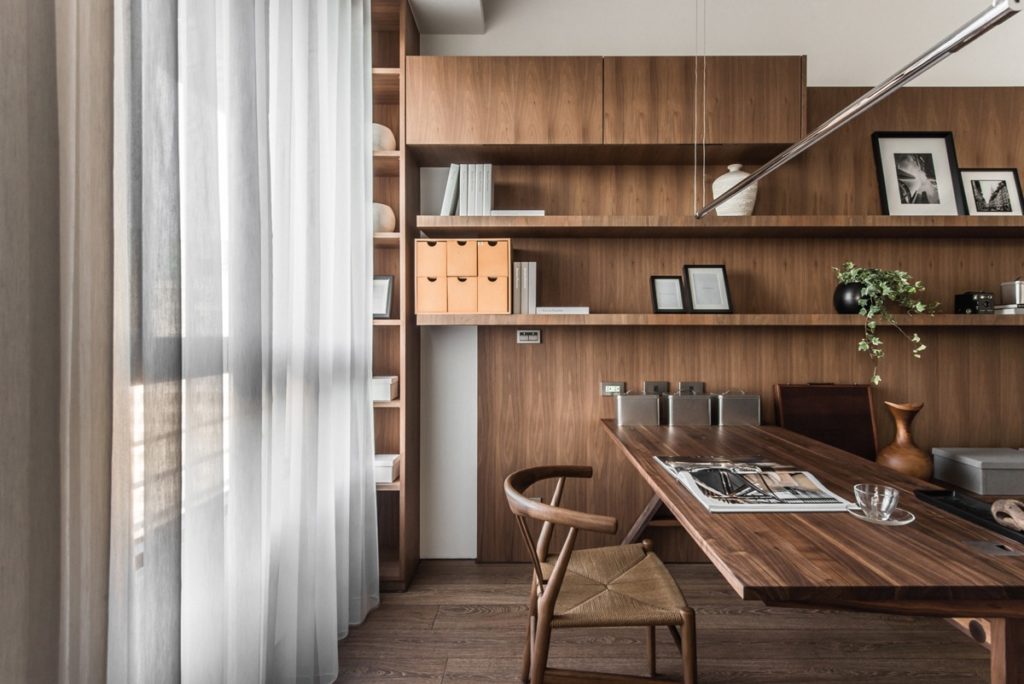
Even if you keep a lighter tone to the wood used in a home office, the strong vibe is maintained by the wood’s grain, texture and the way it was shaped. The example above shows how a simple see-through curtain can invoke a sense of restlesness. Imagine the wind coming through and inviting you to breathe deeply before going back to work.
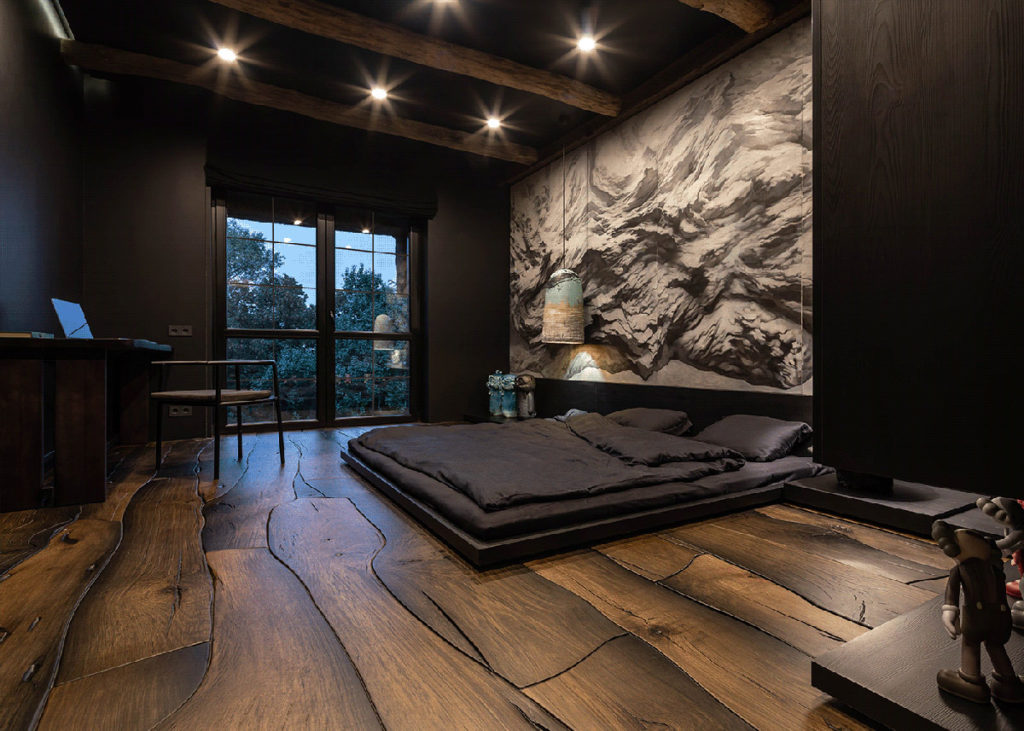
The example above is from an architect’s home – a stunning bedroom in dark colors that also features a home office space. Inspired by the Japanese philosophy of wabi-sabi that finds beauty and harmony in imperfection, this bedroom retreat makes for a great place to work from when you need privacy. Some parts of an architectural design studio’s business is made from a computer, so the laptop decides that this is a temporary home office.
2. Using geometry to shape patterns and visual interest
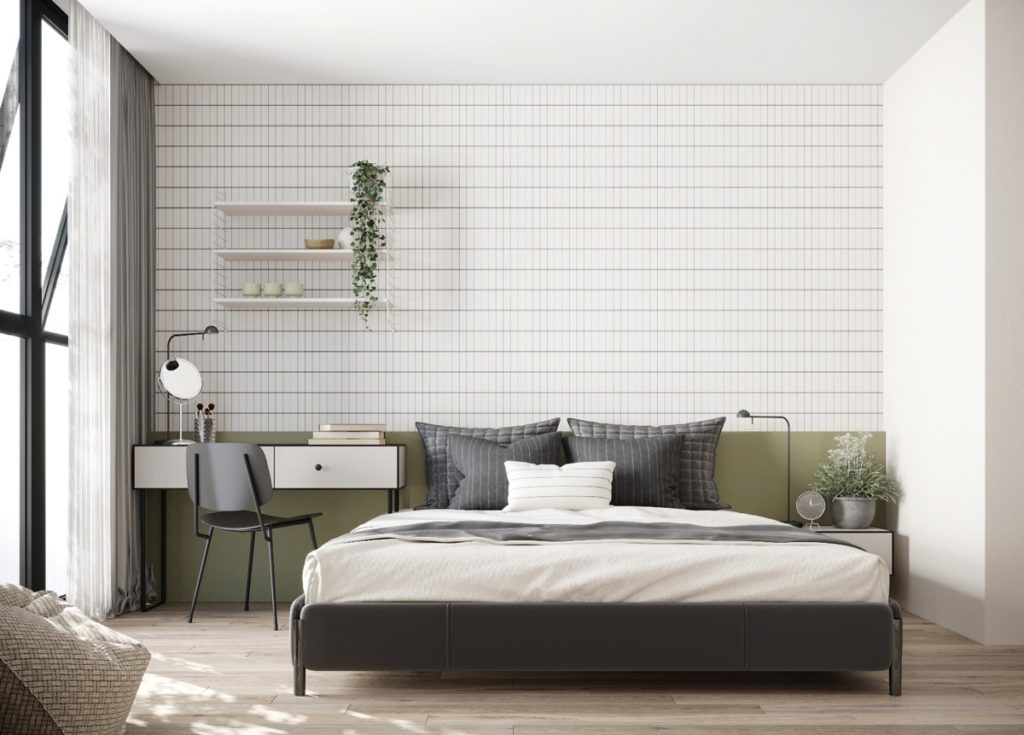
Above we have an example of how to use geometry to create a masculine design that can be also shared. Keeping things underlined with contrasting colors can create an edge in the design. With an olive green headboard that stretches across to contrast the home office corner, this bedroom took advantage of all space to create valuable functionality.
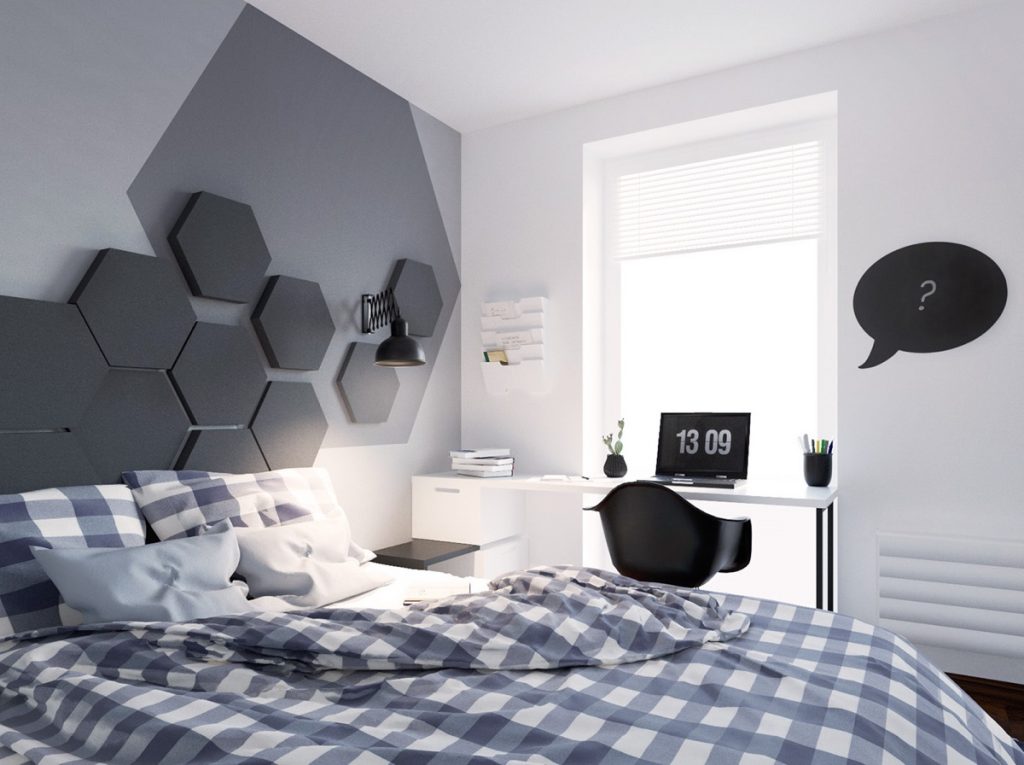
Geometry can be seen shaping 3d walls in this example above, as well as decorating a gingham duvet cover spread on the bed. Right under the window, a long and narrow desk flaunts the everpresent laptop needed for working from home in this day and age.
3. Using bold colors in mostly subdued color palette
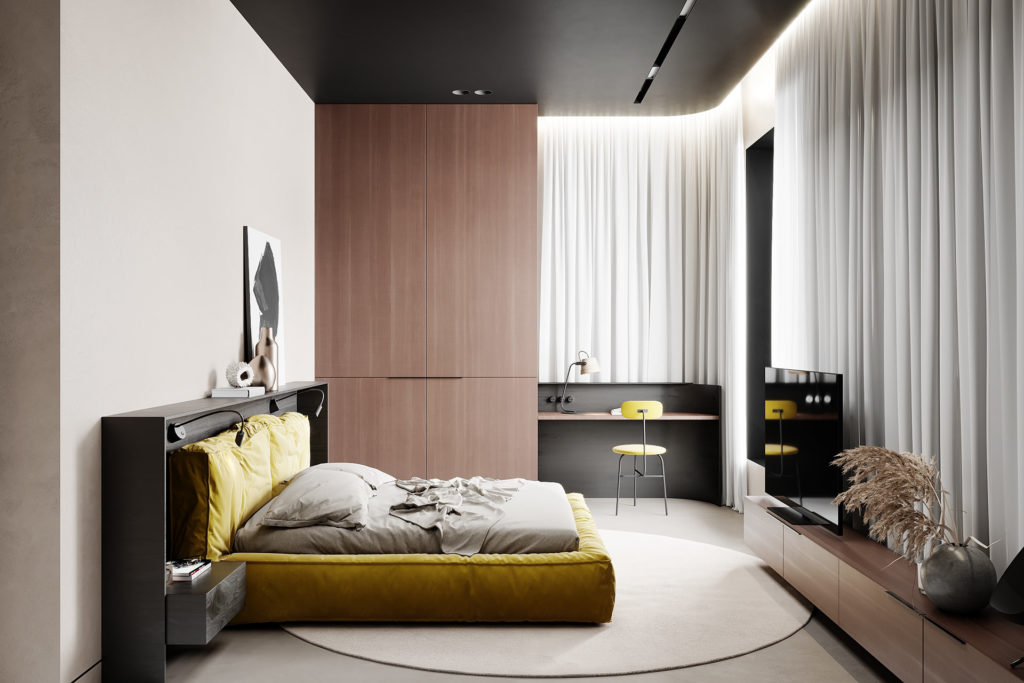
Using bold colors like mustard yellow can update a soft colored interior, making it come alive. Working from the corner of a bedroom becomes comfortable when the surrounding colors help you focus and we know yellow helps with concentrating. Mirroring the brightness of the bed, the desk chair apears to be floating – perfect choice in height and colors that blend with the background.
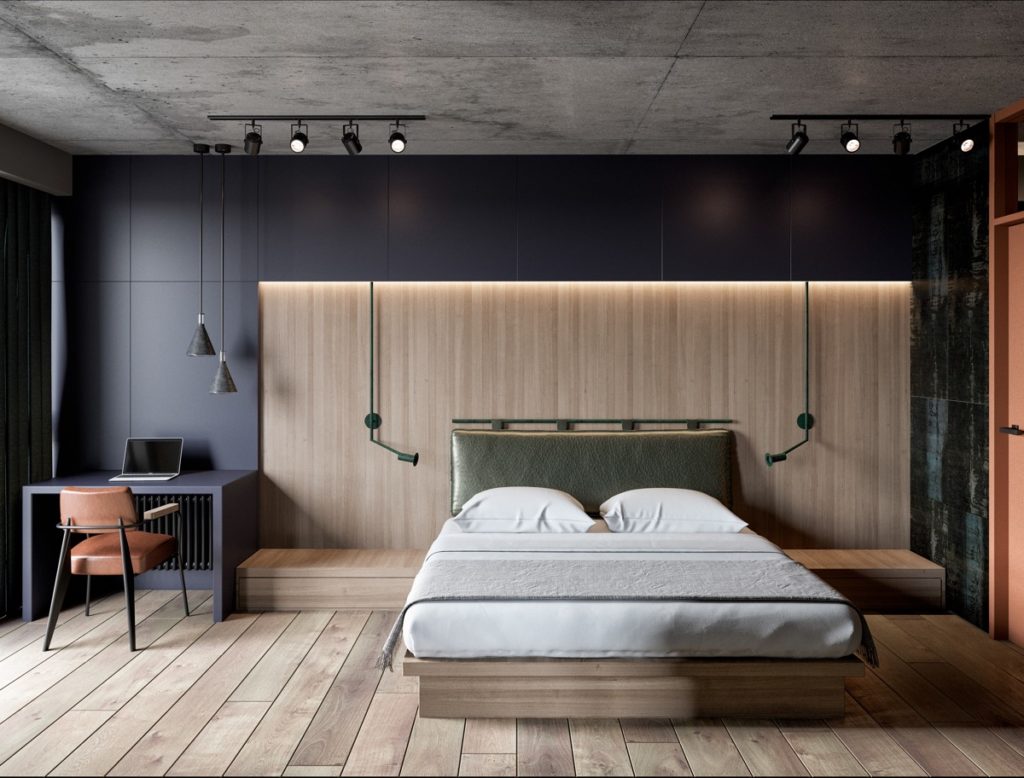
Visualized by Ivan Kucherenko & Volodymyr Dubashevskyi
The example above shows us how deep bold color can define the home workspace and visually separate this side from the sleeping area. By using wood and indirect LED lights, the mood was toned down to be relaxing when it comes to the sleeping area. You can barely see the concrete ceiling, because everything was perfectly balanced.
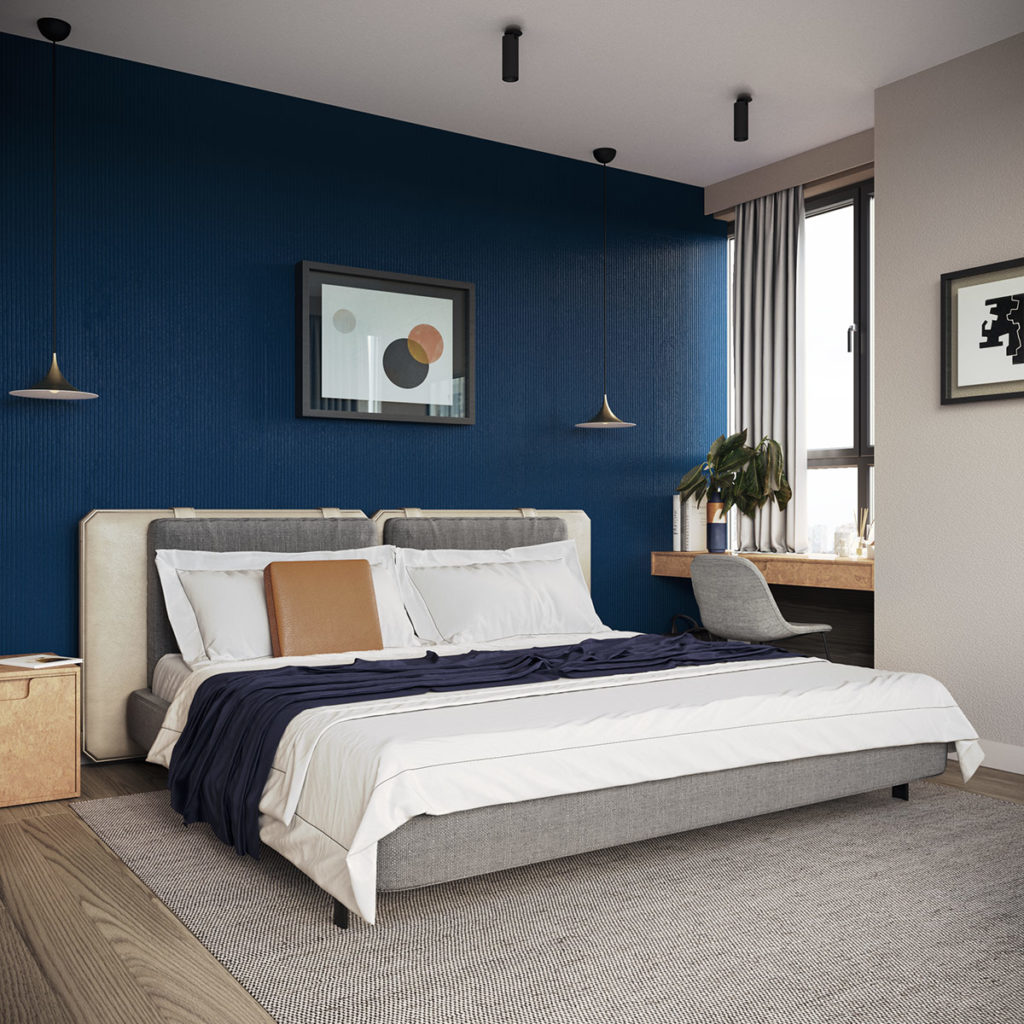
Another way of using deep blue is adding texture to a whole wall painted in blue and then contrasting it with wooden details like the floating desk and singular nightstand. With white, grey and black as a supporting color scheme, the slated blue bedroom wall strethes all the way to the window. This nook is large enough to fit a home office space right under the window.
Which of the three options above would you choose for your own home workspace? Tell us in the comments below.
Here are more ideas on how to fit a workspace in your home:
10 Dark Grey Home Office Setups Bathed in Glamour